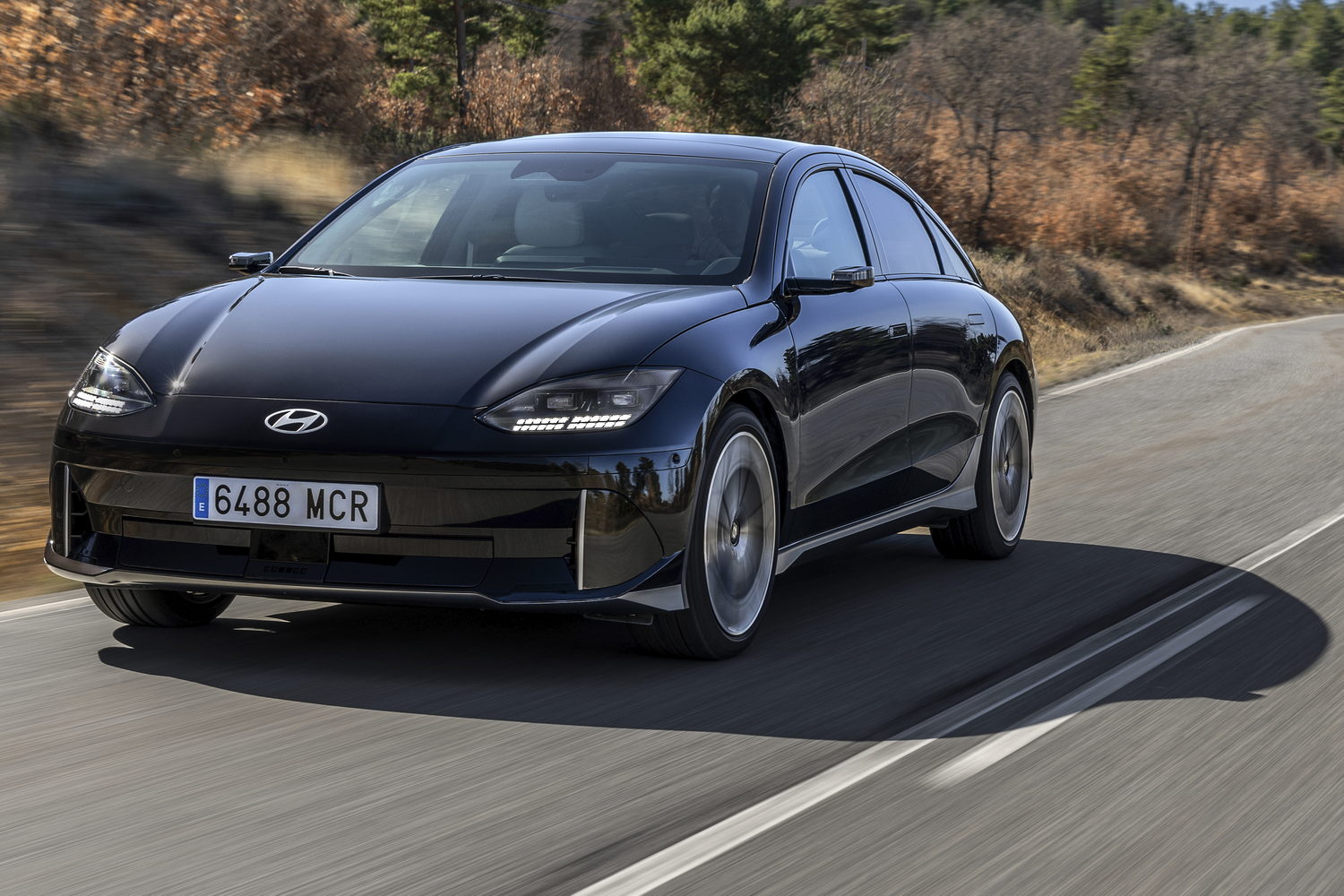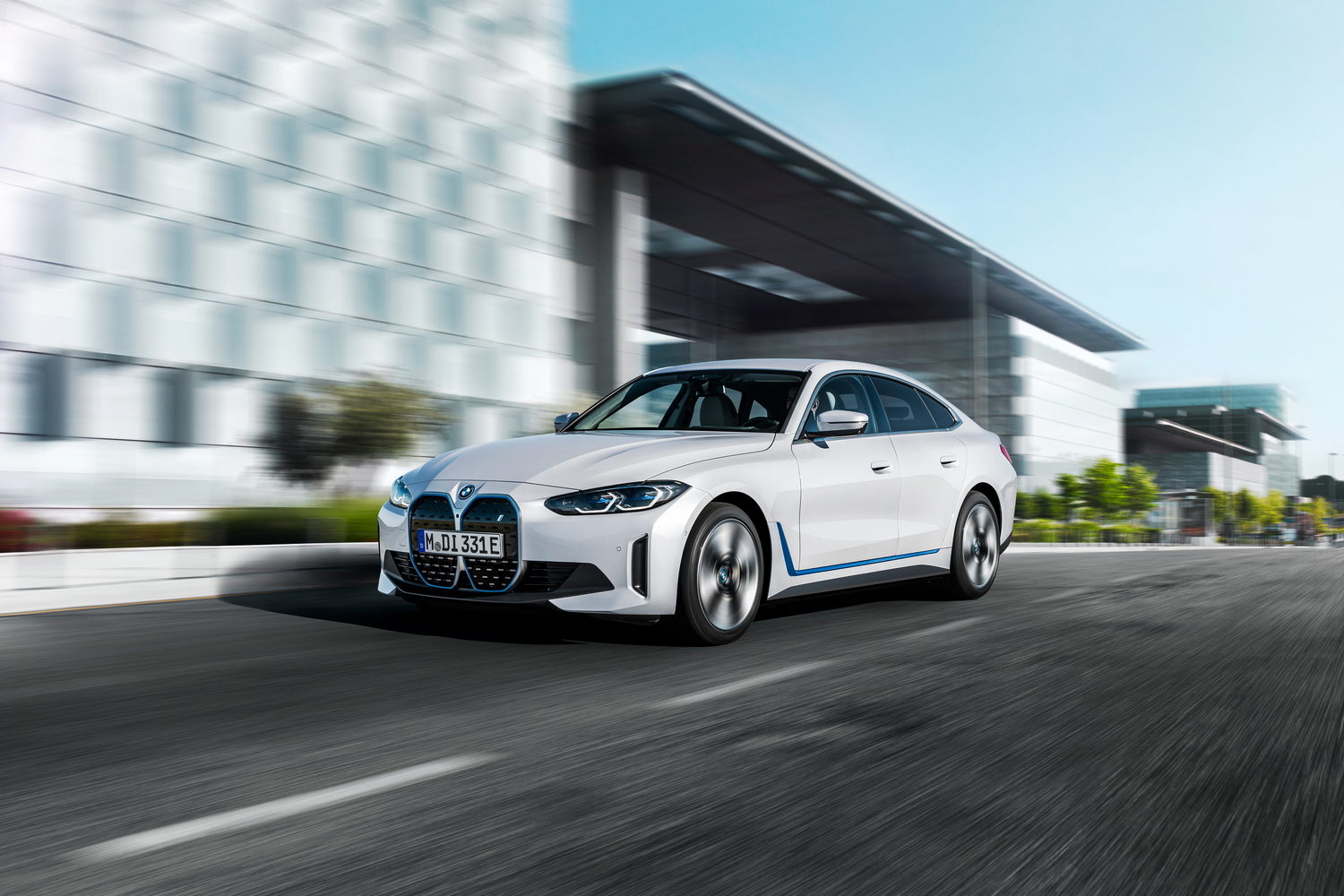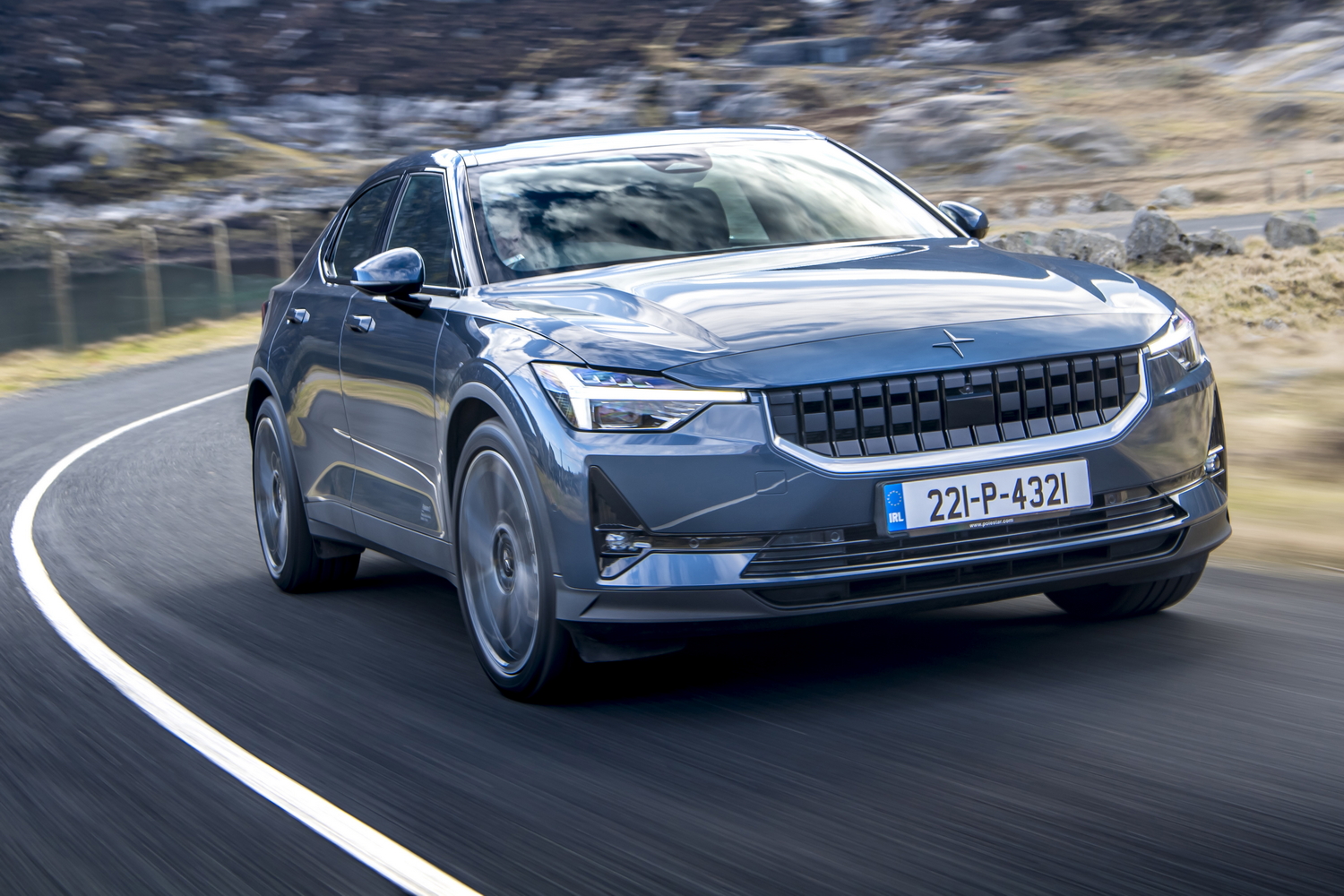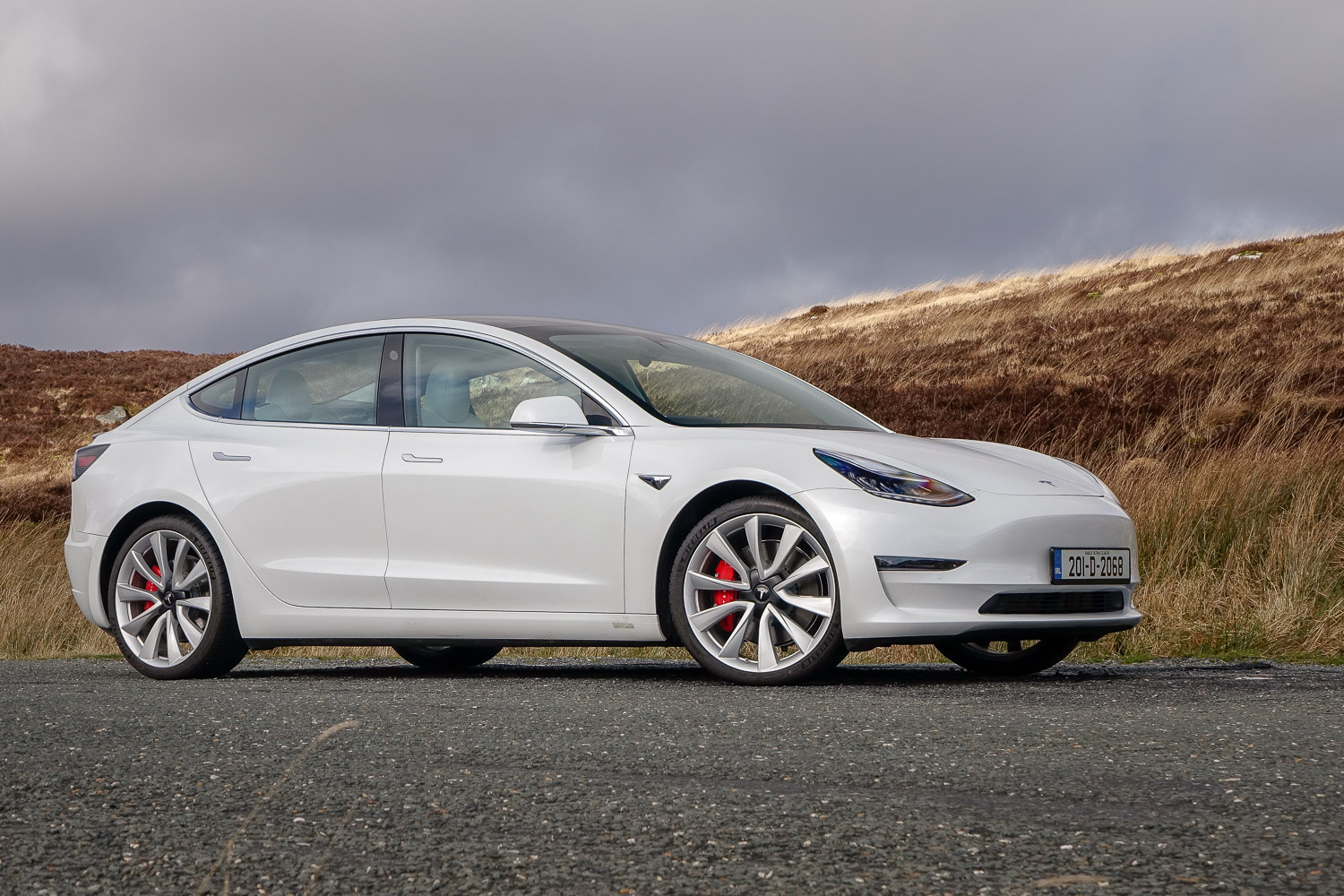Hyundai really got our attention when it launched the Ioniq 5. While the Kona Electric and first-generation Ioniq models were good, solid electric cars, the 5 dazzled with its retro-inspired concept car looks, a spacious and modern interior, and a wide range of excellent electric powertrains. Now that Hyundai has our attention - and that of buyers previously loyal to established premium brands - it is confident enough in its cars' appeal to be really daring with the style. Enter the Ioniq 6, an electric saloon influenced by the Hyundai Prophecy concept car that the Korean company refers to as a 'streamliner'. That's due to the obsession with aerodynamics that went into its shape, in a bid to maximise the range between charges. It's now on sale in Ireland, priced to compete with the Tesla Model 3, Polestar 2 and others. Should it be your next/first EV?
In the metal
The Hyundai Ioniq 5 grabbed attention when it was new, but the Ioniq 6 ramps that up considerably, as it's not at all conventional looking. Response to our social media posts of the car was very mixed, with just as many people disliking the appearance as there were those that loved how daring and unique it is.
There's a very good reason for how it looks, and that's aerodynamic efficiency. The development team set out to reduce the car's drag as much as possible, in a bid to maximise range. The low, smooth front end looks like it cuts through the air cleanly, but look closely and you'll see a few other tricks at work, such as large automatic opening flaps in the lower apron to allow cooling air into the radiator behind only when it's needed. There are slots in the outer edges of the bumper as well, to guide air through the wheel wells and reduce drag, and there you'll spot slim black "wheel gap reducers", too.
You can't see the underbody covers that form part of the package of aerodynamic measures, but the rear end's design is dominated by two different spoiler-like features, one at the trailing edge of the sloped rear window and another above the full-width LED lights. The latter are a talking point on their own thanks to Hyundai's 'Parametric Pixel' motif, and they sit above a detailed rear bumper/diffuser.
The result is an incredibly low drag coefficient of 0.21, and hints of other notable cars, such as the first-generation Mercedes CLS and even the current Porsche 911.
Flush-fitting door handles are standard, while the conventional door mirrors are swapped for cameras in the range-topping model. Likewise, only that car gets the more stylish 20-inch alloy wheels, as the 18-inch rims help extend the range - and comfort.
After the shock of the exterior, the interior is a calm oasis of clean lines and understated design. It takes some cues from the Ioniq 5, but it's quite different in other ways. There is the same excellent double-screen layout using two 12.3-inch displays as standard across the range, though. The instruments are futuristic in style, but easy to read at a glance. And as we've seen in other Hyundais, the integrated blind-spot camera view is a brilliant idea.
The big touchscreen in the middle is easy to navigate and full of features, though we're very glad to see that the switchgear for the dual-zone climate control is kept separate below it, along with a physical volume knob and other shortcut buttons for the system.
Unlike the Ioniq 5, the 6's centre console doesn't move. It's a two-level design with a rubberised wireless charging pad, USB-A port and cupholders up top and a large storage area underneath with a 12-volt socket. Two USB-C ports are in the storage box under the armrest and there are more in the back of the car (along with vents for the rear passengers). Interestingly, the electric window switches are also on the centre console, allowing Hyundai trim back the door cards and free up more space.
Despite what appears to be a low-slung roof, there's loads of headroom up front and Hyundai claims that the Ioniq 6 has more front legroom than any other car it makes. Plenty of adjustment of the driving position through the seat and steering wheel is possible and there are extra buttons on the side of the passenger seat nearest the driver to allow others move that chair electrically when required.
The flattened-circle steering wheel has a pleasingly thin rim and is good to hold, though we found the interactive LEDs on its boss a little unnecessary. The drive selector is a column you twist on the right of the wheel, under that for the wipers.
Through all this is a sense of high quality. The Ioniq 6 isn't a luxury car as such, but it does feel well made and the plastics used in the cabin are textured in an interesting fashion. Metallic highlights, such as the extravagantly-styled speaker grilles, raise the ambience, as does the stunning mood lighting at night. Incidentally, buyers can choose between two different colour schemes for the interior - one bright, one dark.
Adults of average height don't have to duck too much to get into the back of the Ioniq 6 - and the doors open wide to make it easier to get in, too. The floor is flat all the way across and the backs of the front seats are scalloped to make plenty of space for knees, as well. There's enough headroom to accommodate six-feet-tall people, just about, and while there probably isn't space to accommodate three child seats, three teenagers should fit in without too much trouble. There are ISOFIX mountings in the outer two seats.
It's not possible to fold the seatbacks down from inside the car, but there are levers in the boot to make that happen. The boot itself is quite small, at 401 litres, though at least the charging cables and other bits and pieces can be kept under the bonnet up front, where there's an extra storage area of 45 litres.
Driving it
The word that comes to mind first when describing how the Ioniq 6 drives is 'refinement', as it is exceptionally quiet and smooth - even by the standards of good electric cars. The low-drag design helps keep wind roar over the car body to a minimum which you'll appreciate at motorway speeds especially. Double-glazed side glass helps as well. Road noise is well-contained, too (the test car sat on 18-inch alloy wheels shod in modest Nexen tyres), while the electric motor is barely ever audible.
In the default Normal driving mode, response to the accelerator is smooth and measured, hiding the fact the car is rear-driven as the traction of the rear tyres is never troubled. Indeed, you may initially wonder where the 228hp and 350Nm of torque are. However, if you put your foot down in search of it, the Ioniq 6 delivers decent performance and you can sense that it's rear-wheel driven, though it's never unruly - certainly not in the dry conditions of our test drive. It feels notably friskier in the Sport driving setting and owners can program their own custom driving mode, too. Hyundai quotes 0-100km/h in 7.4 seconds for this version of the car.
Through a sequence of tight corners you get a sense of the car's excellent balance, thanks to the low-mounted battery pack and rear motor, and it's genuinely enjoyable to drive, if not sporty as such. Instead, the chassis is controlled, keeping unwanted body movements in check, though it does that without resorting to over-stiff springs and anti-roll bars. On the flipside, it's not pillow-soft over poor road surfaces, but it deals with them competently and it always feels controlled and stable. That's in spite of feeling lighter and more agile than the Ioniq 5 it shares its core platform with.
I realise that more readers will be interested in how efficient the Ioniq 6 is than how it goes around corners...
We have not yet had the opportunity to test the range to the extreme, but initial signs are good. The official range for this model is 614 kilometres. On a very cold day, we set out with a full battery and the range showing at about 530km. A heat pump is fitted as standard so that will help when temperatures are low. During some quicker driving on hilly roads we saw the energy consumption hit as high as 20kWh/100km, while it dropped to nearly 13kWh/100km when just ambling around. Overall, we saw an average in and around 17kWh/100km and we'd expect owners to better that with a little effort.
Using DC public chargers, the Ioniq 6 can charge at up to 232kWh (that's 100km in under five minutes if you can find a good enough charger, in theory), with up to 11kW possible on an AC outlet.
What you get for your money
Irish pricing for the Hyundai Ioniq 6 starts at €48,295 including incentives that are in place at the time of writing. That's for the Signature model using the 53kWh (gross capacity) battery pack, a 151hp electric motor and an official range between charges of up to 429 kilometres. The 77.4kWh battery (74kWh usable) can be had in an Ioniq 6 Signature, too, priced at €54,315.
Signature specification includes the 18-inch alloys pictured here, cloth upholstery, heated front seats and steering wheel, dual-zone climate control, auto lights and wipers, LED lights all-round, electric tailgate, electric-folding door mirrors, rear-view parking camera, adaptive cruise control, Bluetooth, wireless charging pad, navigation, the two 12.3-inch screens and a wealth of safety equipment. As mentioned earlier, a heat pump is standard across the line-up, too.
A single Ioniq 6 Elegance is offered at €62,496 (it's the one we drove), using the larger battery pack. It adds leather upholstery, Remote Smart Parking Assist, upgraded headlights, Highway Drive Assist 2, Blind Spot View Monitor, rear privacy glass, ventilation for the front seats, Bose speakers, ambient lighting, 'Premium Relaxation' seats, heated rear seats, head-up display and even more driver assistance technology.
Topping the line-up is the all-wheel-drive Ioniq 6 Finesse at €67,995. This has electric motors front and rear for a peak power output of 325hp and a slightly reduced range - to 583km - from the 77.4kWh battery due to the fitment of 20-inch wheels as standard.
Summary
Hyundai is making a bold statement with the aero-lead design of the Ioniq 6, but there's a lot more to this car than its exterior style. The aerodynamics help it achieve noteworthy efficiency in everyday driving of course, but it also has a great cabin, a huge level of standard equipment and it's genuinely good to drive, with a welcome focus on refinement. Buyers that have traditionally been loyal to premium marques will find a lot in the Ioniq 6 to tempt them away, that's for sure.







































